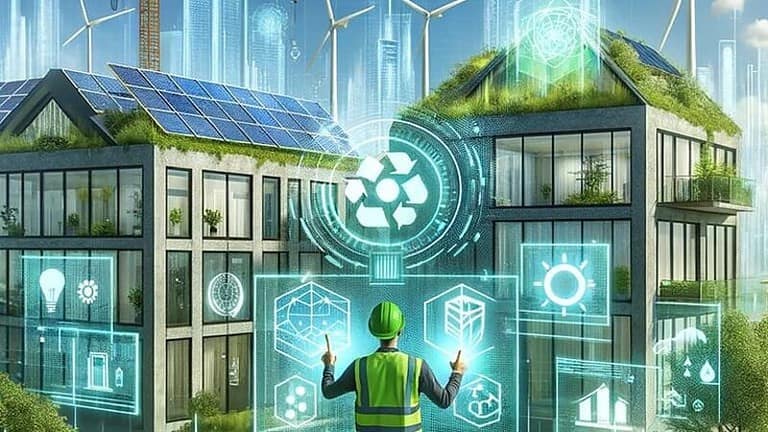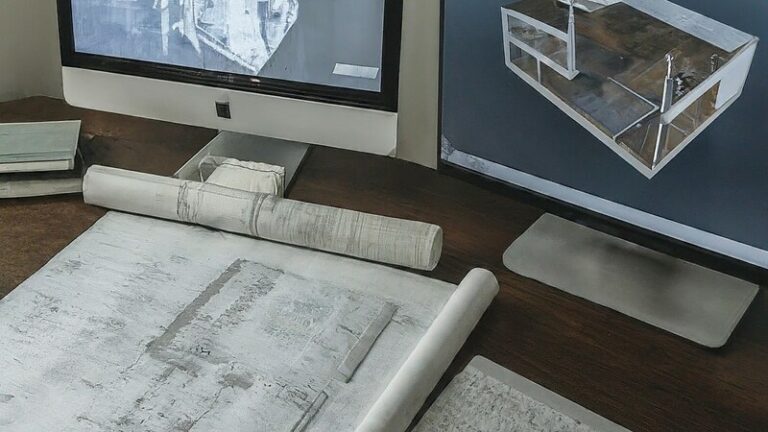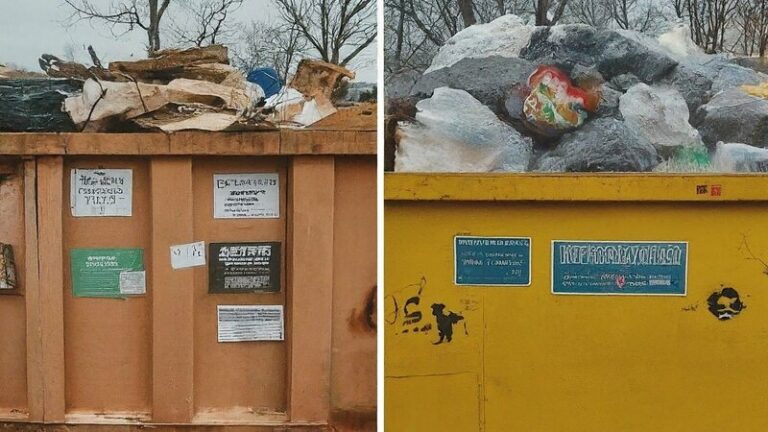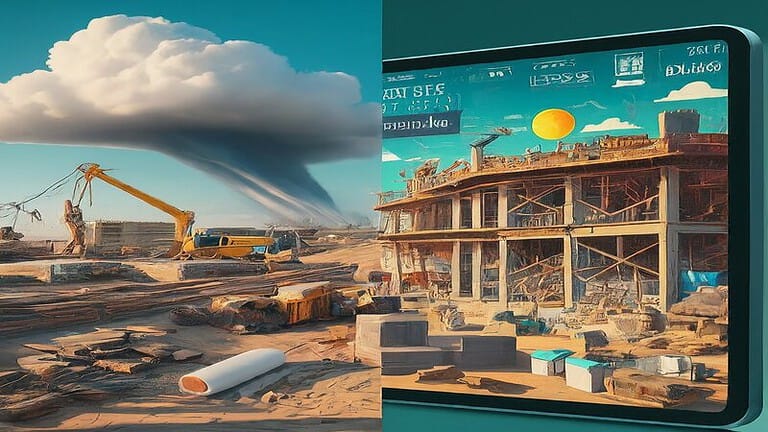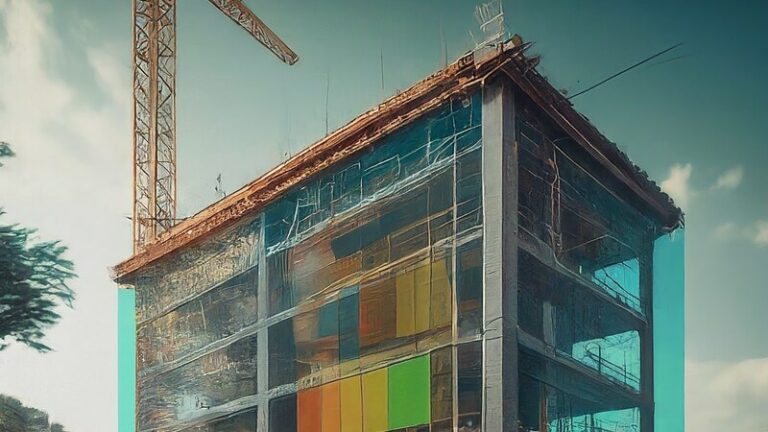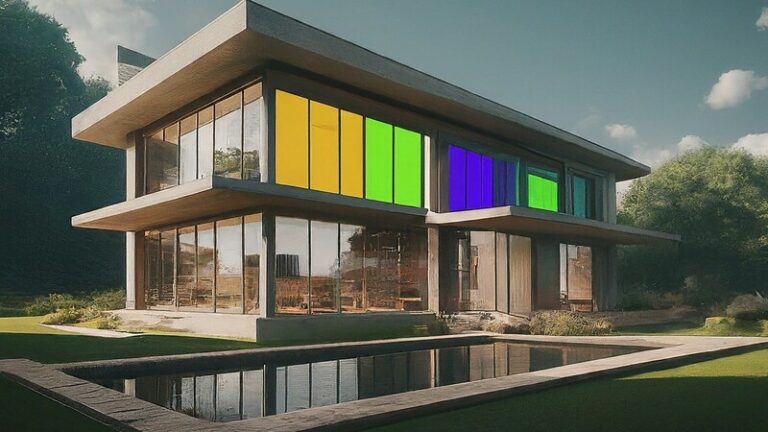The construction industry is evolving, driven by the urgent need to find solutions for environmental challenges such as climate change and resource depletion. In this landscape, the concept of green building software has emerged as a powerful force for change. Green building, also known as sustainable construction, prioritizes environmental responsibility, energy efficiency, and resource conservation in building design and construction. It represents a proactive approach to mitigating the environmental impact of the construction industry and reducing the carbon footprint of buildings.
As green building practices continue to gain momentum, construction professionals face unique challenges when estimating the costs associated with sustainable construction projects. Traditional estimation methods often fall short in accounting for the complexities of green building, which involve considerations like energy-efficient systems, eco-friendly materials, and long-term operational costs. Fortunately, construction estimation software is stepping up to address these challenges and support the growth of sustainable construction.
In this article, we explore the critical role that construction estimation software and green building software play in advancing sustainable construction practices. We’ll delve into the definition of green building, the challenges it poses for estimators, and the specific features of estimation software that facilitate sustainable construction. Through real-world case studies and best practices, we’ll illustrate how software can be a game-changer in promoting sustainability in the construction industry.
Understanding Green Building and Sustainability
Green building is a holistic approach to construction that prioritizes the well-being of both people and the planet. It aims to minimize the negative environmental impact of buildings while enhancing occupant comfort and health. Sustainable construction practices encompass various aspects, including energy efficiency, water conservation, waste reduction, and the use of eco-friendly materials. Key principles of green building include:
Energy Efficiency: Green buildings are designed to maximize energy efficiency, reducing energy consumption and greenhouse gas emissions. This includes features such as energy-efficient lighting, heating, and cooling systems, as well as passive design strategies to optimize natural lighting and ventilation.
Resource Conservation: Sustainable construction minimizes resource depletion by using materials efficiently and responsibly. This includes sourcing locally available materials, using recycled or reclaimed materials, and reducing waste during construction.
Indoor Air Quality: Green buildings prioritize indoor air quality to create healthier living and working environments. This involves the use of low-VOC (volatile organic compound) materials, efficient ventilation systems, and strategies to minimize indoor pollutants.
Water Efficiency: Sustainable construction minimizes water consumption through the use of low-flow fixtures, rainwater harvesting, and drought-tolerant landscaping.
Site Sustainability: Green building considers the impact of construction on the surrounding environment. This includes preserving natural habitats, managing stormwater runoff, and reducing the heat island effect.
Lifecycle Assessment: Green building takes into account the entire lifecycle of a building, from construction and operation to maintenance and demolition. This involves assessing the environmental impact and cost implications over the building’s lifespan.
Sustainable construction not only benefits the environment but also offers economic advantages, such as reduced operating costs and increased property value. However, accurately estimating the costs associated with green building features and practices presents unique challenges for construction professionals.
Challenges in Green Building Estimation
Estimating the costs of green building projects requires a departure from traditional estimation practices. While conventional construction estimates primarily focus on labor and material costs, green building estimation encompasses a broader spectrum of considerations. Estimators must account for the costs of sustainable materials, energy-efficient systems, green certifications, and long-term operational expenses. Here are some of the key challenges in green building estimation:
A. Sourcing Sustainable Materials: Green building often involves the use of eco-friendly materials, which may have varying costs and availability compared to conventional materials. Estimators must identify and source these materials while considering their environmental benefits and costs.
B. Energy-Efficient Systems: Estimating the costs of energy-efficient systems, such as solar panels, high-efficiency HVAC (heating, ventilation, and air conditioning) systems, and smart building technologies, requires specialized knowledge and calculations.
C. Certification Costs: Many green building projects aim for certification under programs like LEED (Leadership in Energy and Environmental Design) or BREEAM (Building Research Establishment Environmental Assessment Method). These certifications involve additional costs for documentation, testing, and verification.
D. Lifecycle Analysis: Estimators need to assess the lifecycle costs of green building features, including maintenance, repairs, and energy savings over the building’s lifespan. This involves predicting future operational costs, which can be challenging.
E. Project-Specific Considerations: Each green building project is unique, and estimators must consider project-specific factors such as site conditions, climate, and local regulations when determining costs.
These challenges highlight the need for specialized tools and software solutions that can streamline the estimation process for sustainable construction projects. Construction estimation software tailored for green buildings offers a range of features and capabilities that address these complexities and promote accuracy in cost estimation.
The Role of Estimation Software in Sustainable Construction
Construction estimation software has evolved to meet the demands of sustainable construction, offering a range of tools and features that support accurate cost estimation for green building projects. Here’s how estimation software plays a pivotal role in sustainable construction:
A. Eco-Friendly Materials Database: Estimation software often includes a comprehensive database of eco-friendly materials. This database helps estimators quickly identify and select sustainable materials, complete with cost data and availability information.
B. Energy Modeling and Analysis: Specialized software can perform energy modeling and analysis to estimate the energy consumption and potential savings of various building systems and designs. This allows estimators to assess the cost-effectiveness of energy-efficient features.
C. Life-Cycle Cost Assessment: Estimation software can conduct life-cycle cost assessments, taking into account operational and maintenance costs over the building’s lifespan. This enables estimators to provide clients with a more accurate picture of long-term savings and return on investment (ROI).
D. Sustainability Certifications Integration: Software may integrate with sustainability certification programs like LEED or BREEAM, helping estimators track and calculate the costs associated with achieving specific sustainability goals and certifications.
The use of estimation software not only improves the accuracy of cost estimates for green building but also streamlines the estimation process, saving time and enhancing collaboration among project stakeholders. Here, we delve deeper into the key features of estimation software for green building and provide insights into real-world applications.
Key Features of Estimation Software for Green Building
To effectively support sustainable construction, estimation software offers a range of features and capabilities that address the unique requirements of green building projects:
Eco-Friendly Materials Database:
Estimation software provides access to an extensive database of sustainable materials, complete with cost data and environmental impact assessments.
Estimators can easily identify and select materials that align with green building objectives, streamlining the selection process.
Energy Modeling and Analysis:
Specialized software tools enable estimators to perform energy modeling and analysis.
Estimators can evaluate the energy efficiency of building systems, assess potential energy savings, and calculate the associated costs and benefits.
Life-Cycle Cost Assessment:
Estimation software conducts life-cycle cost assessments by considering not only initial construction costs but also long-term operational and maintenance expenses.
This feature helps estimators provide clients with a comprehensive understanding of the financial implications of sustainable choices.
Sustainability Certifications Integration:
Many construction estimation software solutions integrate with sustainability certification programs such as LEED and BREEAM.
Estimators can track and calculate the costs associated with achieving specific sustainability goals and certifications, ensuring compliance with green building standards.
These features empower construction professionals to make informed decisions during the estimation process, aligning project goals with sustainability objectives.
Case Studies: Successful Green Building Estimation
Real-world examples illustrate how construction estimation software can drive successful green building projects, delivering environmental benefits, cost savings, and enhanced marketability:
LEED-Certified Office Building:
A construction company used estimation software to assess the costs of incorporating sustainable features into an office building project.
The software facilitated accurate calculations of energy-efficient lighting, HVAC systems, and green materials.
The project achieved LEED Platinum certification, resulting in reduced operational costs, increased tenant satisfaction, and a competitive edge in the commercial real estate market.
Net-Zero Energy Home:
A homebuilder utilized estimation software to evaluate the costs of constructing a net-zero energy home.
Energy modeling tools in the software allowed estimators to optimize the building’s design for energy efficiency.
The project exceeded its energy performance goals, resulting in significant energy cost savings for the homeowner and reducing the home’s carbon footprint.
Sustainable School Construction:
A school district employed estimation software to estimate the costs of sustainable design elements for a new school building.
The software’s life-cycle cost assessment feature helped the district make informed decisions on long-term maintenance and energy savings.
The sustainable school design resulted in reduced operating costs and provided students with a healthier learning environment.
These case studies underscore how construction estimation software can be a catalyst for green building success. By accurately estimating the costs of sustainable features, construction professionals can demonstrate the value of green building practices to clients and stakeholders.
Best Practices for Implementing Estimation Software in Green Building
Implementing estimation software for green building projects requires careful planning and consideration. Here are best practices for effectively integrating software into sustainable construction processes:
Comprehensive Training:
Ensure that your team receives comprehensive training on the software’s features and functionalities, with a focus on its green building capabilities.
Training sessions should cover how to access and use the eco-friendly materials database, conduct energy modeling, and perform life-cycle cost assessments.
Integration with Sustainability Experts:
Collaborate with sustainability experts and architects to ensure that software-driven estimations align with project sustainability goals.
Establish a clear communication channel between estimators and sustainability professionals to make informed decisions.
Sustainable Materials Selection:
Leverage the software’s materials database to select sustainable materials that meet project requirements and sustainability objectives.
Consider the environmental impact, cost, and availability of materials in the database.
Energy-Efficient System Design:
Utilize energy modeling and analysis tools to optimize the design of energy-efficient systems and building features.
Evaluate the cost-effectiveness of energy-saving measures and select those that provide the best return on investment.
Life-Cycle Cost Consideration:
Include life-cycle cost assessments in your estimation process to provide clients with a comprehensive understanding of the financial implications of sustainable choices.
Highlight the long-term benefits of sustainable features, such as reduced operational costs.
Collaboration and Feedback Loop:
Foster collaboration among estimators, architects, sustainability experts, and other project stakeholders.
Establish a feedback loop to continuously improve the estimation process for green building projects.
Quantifying Sustainability Benefits: ROI Analysis
One of the compelling advantages of sustainable construction is the potential for significant return on investment (ROI). Construction professionals can quantify these benefits through ROI analysis, showcasing the financial advantages of green building practices. ROI analysis involves:
Calculating Energy Savings: Estimators can use software-driven energy modeling to estimate the energy savings associated with green building features.
By comparing energy consumption before and after the implementation of energy-efficient systems, estimators can calculate the potential cost savings over the building’s lifespan.
Assessing Operational Cost Reductions: Consider long-term operational cost reductions, such as reduced maintenance expenses and lower utility bills, when conducting ROI analysis.
Quantify reductions in greenhouse gas emissions, water conservation, and other sustainability metrics to demonstrate the project’s positive impact on the environment.
Marketability and Value: Highlight the enhanced marketability and value of green buildings.
By quantifying the financial and environmental benefits of sustainable construction, construction professionals can provide compelling arguments for green building projects, gaining buy-in from clients and stakeholders.
Overcoming Green Building Estimation Challenges
While construction estimation software is a powerful tool for green building projects, it’s essential to be aware of potential challenges and obstacles:
Complexity of Sustainability Factors:
Green building estimation involves numerous sustainability factors, each with its own complexities.
Overcome this challenge by collaborating with sustainability experts who can provide insights and guidance on sustainable practices and materials.
Changing Market Conditions:
The availability and costs of sustainable materials and technologies may fluctuate over time.
Stay updated on market conditions and adapt estimates accordingly by using real-time data from the software.
Client Education:
Clients may not fully understand the benefits of sustainable construction, making it challenging to justify additional upfront costs.
Provide clear and persuasive communication to educate clients about the long-term advantages of green building practices, including cost savings, environmental benefits, and improved occupant well-being.
Data Accuracy and Validation:
Ensure the accuracy of data used in estimation software, especially when conducting life-cycle cost assessments.
Validate assumptions and data sources to enhance the credibility of estimates.
Integration of Design Changes:
Green building projects often involve ongoing design refinements and adjustments.
Maintain a flexible estimation process that can accommodate design changes and updates, ensuring that estimates remain accurate throughout the project.
By proactively addressing these challenges, construction professionals can navigate the complexities of green building estimation effectively and deliver successful sustainable projects.
Sustainable Design and Estimation Software Integration
To maximize the benefits of green building practices, it’s crucial to integrate sustainable design principles seamlessly with construction estimation software. Here’s how this integration can enhance the sustainability assessment:
Building Information Modeling (BIM):
BIM technology allows for the creation of digital representations of a building’s physical and functional characteristics.
Estimation software can integrate with BIM models, enabling estimators to visualize and analyze the impact of sustainable design choices in a three-dimensional context.
3D Modeling Tools:
3D modeling tools provide a visual representation of sustainable design elements, helping estimators and project stakeholders better understand the project’s sustainability features.
Estimators can assess the spatial requirements of green building features and their potential impact on construction costs.
Optimization of Sustainable Features:
Through integration with BIM and 3D modeling tools, estimators can optimize the placement and design of sustainable features.
This optimization can lead to more cost-effective and environmentally friendly solutions.
Performance Analysis:
Estimation software can facilitate performance analysis by incorporating data from building simulations and energy modeling.
This analysis helps estimators and designers make data-driven decisions to enhance sustainability.
The integration of sustainable design and estimation software promotes collaboration among project stakeholders, improves decision-making, and ensures that sustainable features are seamlessly incorporated into the project’s overall design and cost estimation.
Future Trends in Green Building Estimation Software
As the construction industry continues to prioritize sustainability, green building estimation software is poised to evolve to meet the changing needs of the sector. Here are some emerging trends and innovations in this field:
Artificial Intelligence (AI) and Machine Learning:
AI and machine learning algorithms are being integrated into estimation software to improve the accuracy of predictions and calculations.
These technologies can assist in analyzing complex data sets, optimizing energy-efficient designs, and providing real-time cost estimates.
Blockchain Technology:
Blockchain technology is being explored to enhance transparency and traceability in sustainable construction projects.
Smart contracts and blockchain-based platforms can facilitate the verification of sustainable practices, materials sourcing, and compliance with green building standards.
Internet of Things (IoT) Integration:
IoT devices are being integrated into construction projects to collect real-time data on building performance.
Estimation software can leverage IoT data to refine sustainability assessments, track energy usage, and predict maintenance needs.
Enhanced Visualization Tools:
Visualization tools, including augmented reality (AR) and virtual reality (VR), are being incorporated into estimation software.
These tools enable estimators and project stakeholders to experience sustainable design elements in a virtual environment, aiding in decision-making and communication.
Advanced Sustainability Metrics:
Estimation software is expected to incorporate advanced sustainability metrics that go beyond energy and materials considerations.
Metrics related to social equity, resilience to climate change, and circular economy principles may become integral to sustainable construction assessments.
By staying informed about these trends and innovations, construction professionals can prepare for the future and leverage cutting-edge technologies to advance sustainability in their projects.
Sustainable construction is no longer a niche concept but a mainstream practice embraced by the construction industry worldwide. As green building continues to gain momentum, accurate estimation of the costs associated with sustainable features is critical for the success of sustainable construction projects. Construction estimation software, equipped with specialized features for green building, plays a central role in addressing the challenges of sustainability assessment, providing accurate cost estimates, and quantifying the financial and environmental benefits of sustainable practices.
Through the integration of sustainable design principles, collaboration among project stakeholders, and ongoing education, construction professionals can navigate the complexities of green building estimation effectively. With the support of advanced technologies, such as AI, blockchain, and IoT, the future of green building estimation software holds great promise for driving sustainable construction practices forward, ultimately contributing to a more environmentally responsible and resilient built environment.
See also: Tenders management software and Construction procurement software or Book a Demo today.

